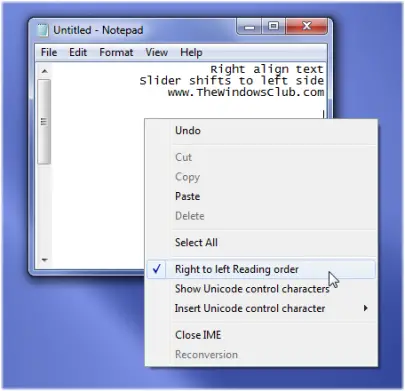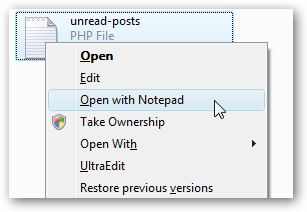The humble Notepad in Windows is one of the most used programs. It is a very basic text editor you can use for simple documents. Let us have a look at some Notepad tips and tricks that will help you get the best out of it.
Notepad Tips and Tricks

Most of us don’t even bother to see what it has to offer, preferring instead to use it in its default state. Here are a few very basic tips to help you get the maximum out of it!
1) To add a date and time stamp to an open Notepad, simply hit F5.
You will see it displayed as: 23:37 10-05-2010
2) At the first line of a Notepad file, type: .LOG
This will put a timestamp at the end of the file, every time you open it.
3) To change the font used in Notepad, click Format > Font and select the font and style you prefer!
4) To customize the Page setup, size & side margins, click on File > page Setup to see the options.
5) The Status Bar appear at the bottom of the Notepad and gives information like the number of Lines and the number of columns, the text is occupying. See how to enable Status Bar in Notepad.
6) You can remove or change Notepad headers and footers. If you open Notepad > File > Page Setup, you will see that the default header and footer settings are:
- Headers: &f
- Footers: Page &p
These commands will display the title of the document on the top & page number at the bottom.
To change headers and footers, you can use the following commands in the Header & Footer fields given in the Page Setup box:
- &l Left-align the characters that follow
- &c Center the characters that follow
- &r Right-align the characters that follow
- &d Print the current date
- &t Print the current time
- &f Print the name of the document
- &p Print the page number
If you leave the Header or Footer text box empty, no header or footer will print. You can also insert words into the Header and Footer text box and they will print in their appropriate position. All header and footer settings must be entered manually each time you want to print a document. These settings cannot be saved.
Read: How to change the default Character Encoding in Notepad.
7) To make the text align to the right side, right-click inside the Notepad and select Right to left reading order.

Read: How to restore the Classic Notepad in Windows 11
8) You can make Notepad behave like a log file:
- Open a blank Notepad file
- Write .LOG (in uppercase) in the first line of the file, followed by Enter. Save the file and close it.
- Double-click the file to open it and notice that Notepad appends the current date and time to the end of the file and places the cursor on the line after.
- Type your notes and then save and close the file.
- Each time you open the file, Notepad repeats the process, appending the time and date to the end of the file and placing the cursor below it.
9) Add “Open with Notepad” to the Context Menu for ALL Files

Open regedit.exe through the start menu search or run box, and then browse down to the following key:
HKEY_CLASSES_ROOT\*\shell
Right-click on “shell” and choose to create a new key, calling it “Open with Notepad”. Create a new key below that one called “command”. Double-click on the (Default) value in the right-hand pane and enter in the following:
notepad.exe %1
The change should take effect immediately… just right-click on any file and you’ll see the next menu entry.
You can also use this registry fix to do it with a click. Just download, extract and double-click on the Open With Notepad Fix.reg file to enter the information into the registry.
You may also use Ultimate Windows Tweaker.
10) If your Notepad is not working properly, this is how you can reset Notepad to default settings.
11) Check this post if you are looking for a Dark Mode Black Notepad.
12) This Notepad post may also interest you – Hide data in a secret Notepad file
You might want to also take a look at the new features in Notepad in Windows.